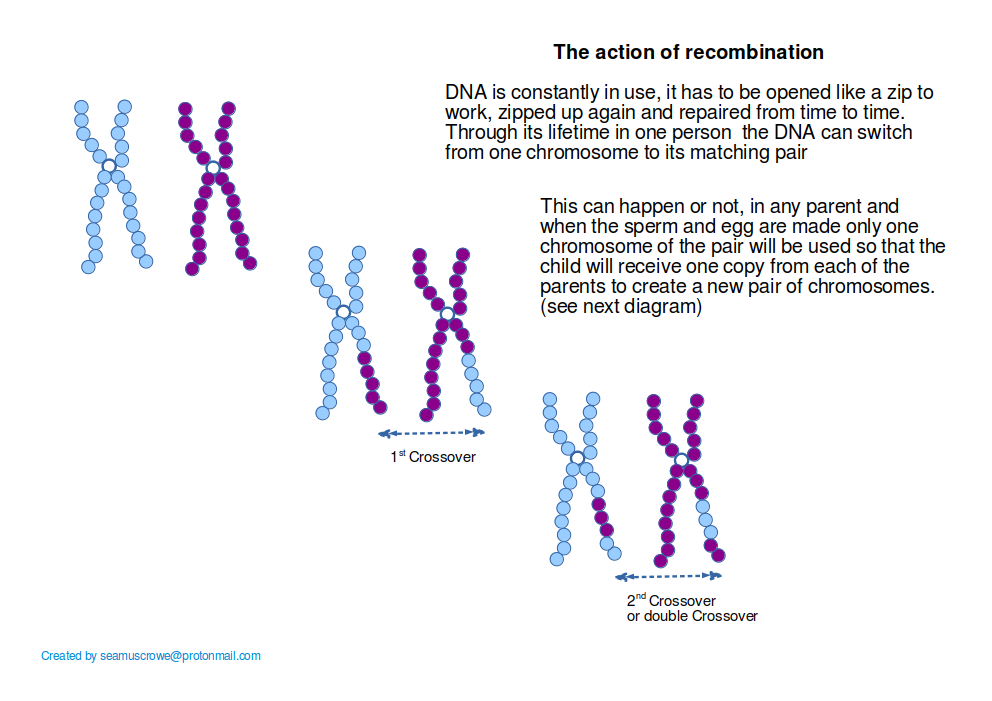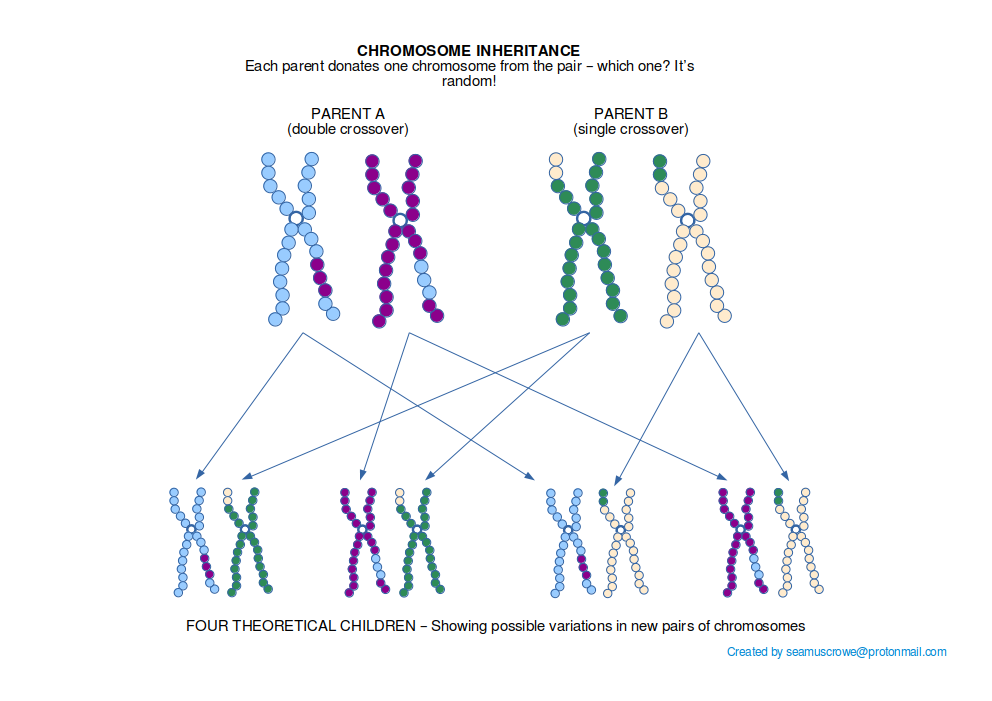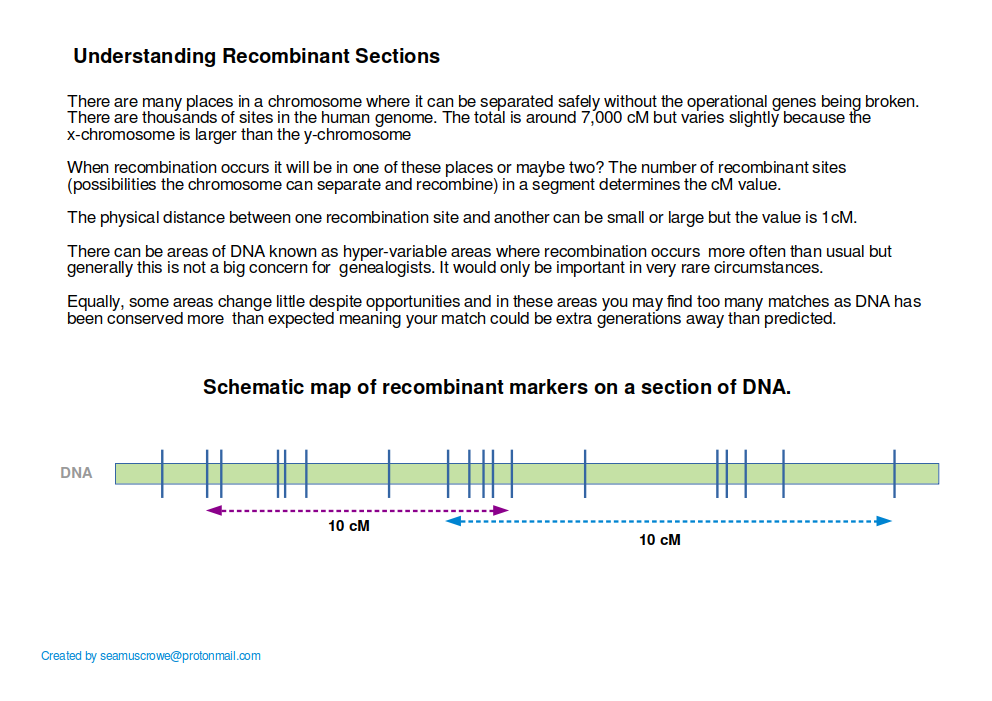Recombination
This was one of the confusing things about early genetics but when you have a pair of chromosomes the DNA from one can swap with the other. Sometimes it is a small bit and sometimes a larger piece. Not only that but some can switch back again. The long strand of DNA,about 2 metres long when stretched out, is often broken and repaired. Sometimes the DNA is just attached back to the other chromosome of the pair.

So this action now confuses any inheritance pattern that we might expect because it is a random event. Some generations it might happen and some it will not. In the 22 pairs the recombination rate is fairly even across all the chromosomes (with some exceptions) and does not create massive problems of variation for animal breeders or genealogists but because it can happen it might be the explanation of why something doesn't quite match up. The X and Y chromosomes can technically swap DNA but it is rare because the two chromosomes have a lot of differences.
It is worth mentioning here that cM values in genealogy relate to the chance of DNA swapping positions and being lost or retained as a result. A value of 10cM is the chance that this recombination may happen, So, 100cM means there is a bigger chance of recombination and why someone with 100cM is more closely related to you than someone who has10cM - there were less generations and less chance of the DNA changing for the segment that matches. See bottom diagram
This diagram shows one chromosome pair for each parent. Each parent donates one of the pair to the new child.This produces four, different, possible outcomes for each child (only one chromosome from 23)


This site aims to be complimentary to other sites with similar aims.
Copyright © 2021- Seamus Crowe All Rights Reserved